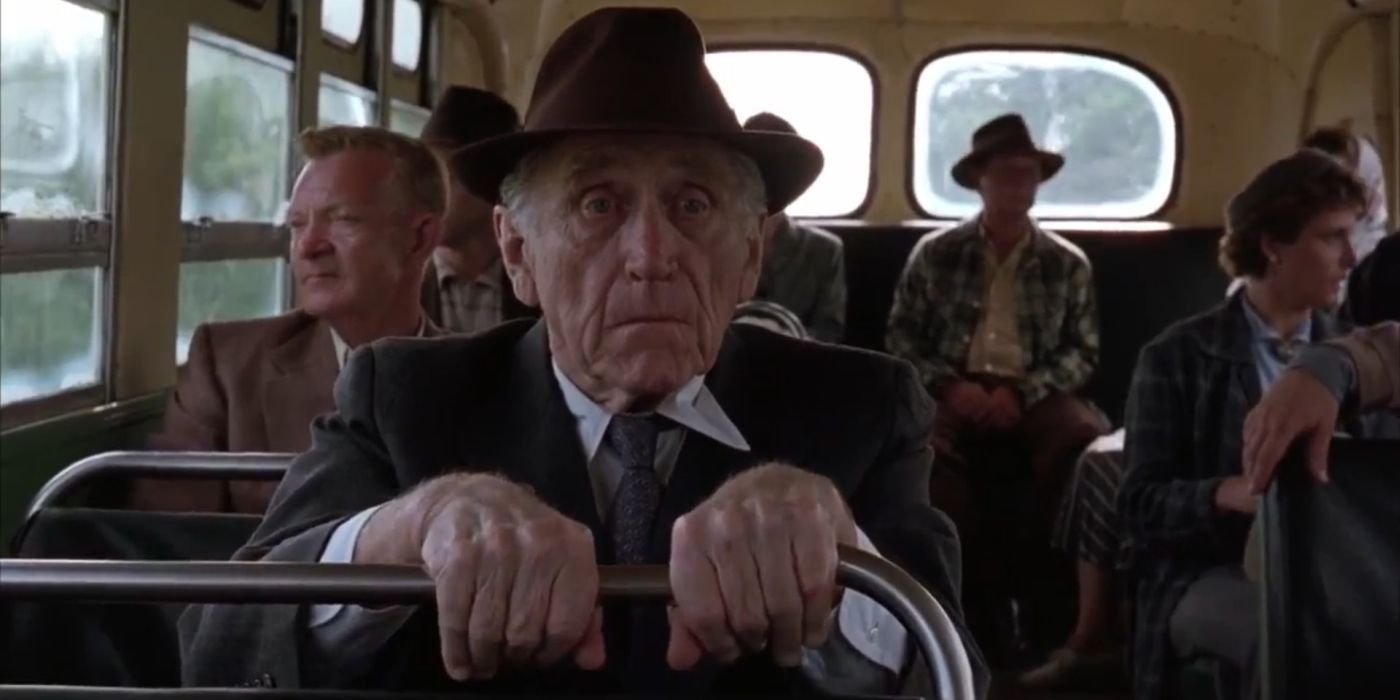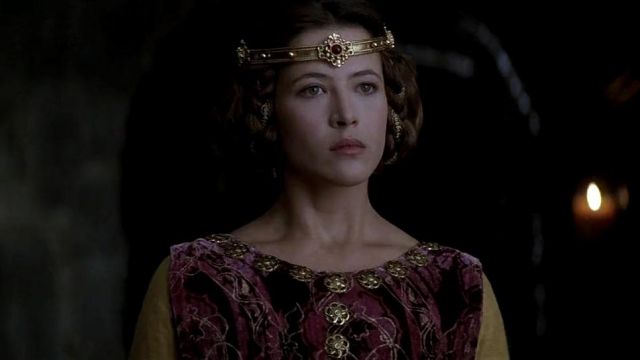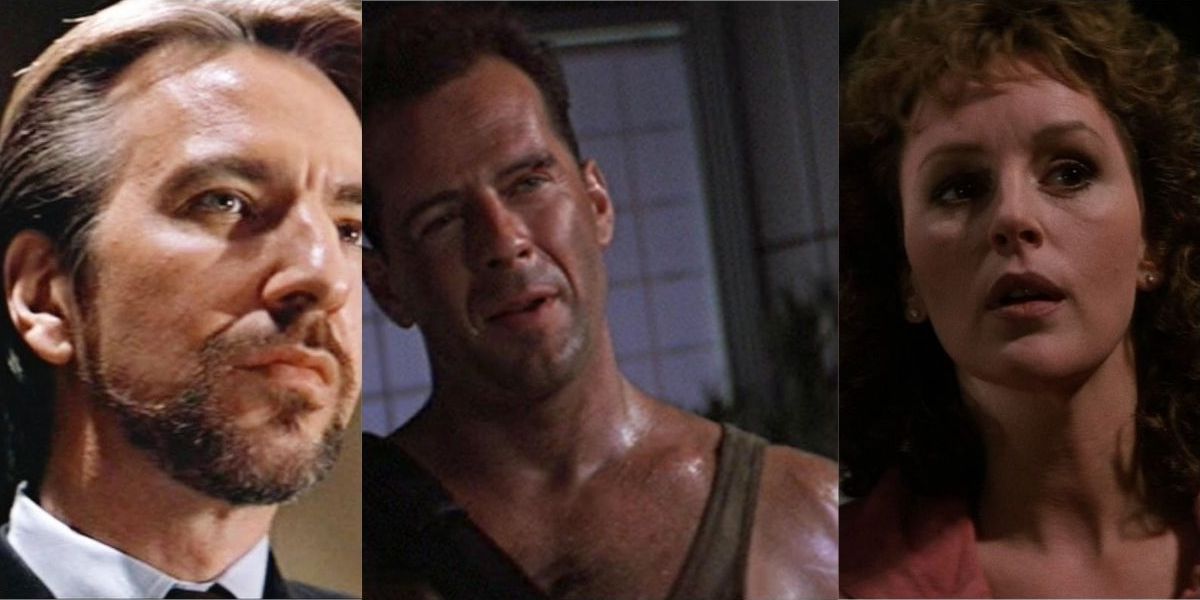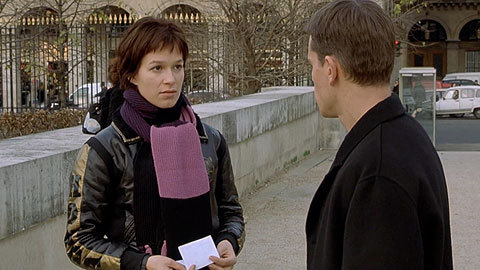Throughout this series of articles, I have attempted in a roundabout manner to define just what a “subplot” is by progressively identifying and eliminating the various inter-narrative structures we commonly call “subplots” but are in fact NOT: relational arcs, the multiple story threads in plural storytelling, prologue and epilogue narratives. With this task completed, the time has come to finally define just what exactly does constitute a “subplot” and how these structures function within the overall narrative discourse.
From my observations, I can venture a definition of a “true” subplot based on four qualities:
A subplot possesses the structure of a fully-formed narrative.
Like any other complete and self-contained narrative, a true subplot features the standard narrative structure of incitement, development, and resolution, centered upon a unique problem or dramatic conflict. As such, the subplot constitutes a fully-fledged “story” in its own right and may be understood as such even if completely extracted from all other story material. This differentiates a subplot from a relational arc. As defined in the first article of this series, a relational arc is the “unfolding” of a functional character relationship already essential to the central plotline. As such, the “narrative” of a relational arc cannot be fully understood without reference to the central plotline, while a true subplot may be understood with no reference to the central plotline at all.
The events of a subplot are independent from the events of the central plotline and bear only minor, if only tangential connections.
As a consequence, the events of a subplot exert only minimal influence upon the course of the central plotline, or no influence at all, and vice versa. This again means that the subplot may be viewed as a separate narrative story in its own right. As a result, a subplot could be completely removed from a movie with no loss of comprehension of the events in the central plotline. This quality differentiates the subplot from the multiple character threads found in plural storytelling (as discussed previously in Braveheart or Die Hard), whereby threads interact, influence one another, and all contribute in some manner to the development of the overall plotline.A subplot's narrative develops concurrently with the central plotline's narrative.
This a subplot's most obvious quality. Over the course of a film, the discourse alternates between the central plotline and the subplot, momentarily pausing the attention given to one narrative to dedicate time to another, giving the impression that subplot material exists within the “gaps” of the central storyline. However, this impression is merely a consequence of the limitations of linear storytelling: only one narrative may be told at a time. Furthermore, no real “pause” occurs in the development of either subplot or central plotline, as it is always implied that the fabula material of the absent narrative continues to progress off-screen during the time dedicated to its alternate. This “concurrentness” draws a clear line between a true subplot and prologue or epilogue narratives. Prologue narratives develop from beginning to end, without interruption, before the central plotline is even introduced. Epilogue narratives operate in the same manner, except they do not begin until after the central plotline has reached its conclusionWhile independent in terms of plot, the events of subplot and central plotline can, and frequently do, exert a mutual influence in terms of the dimensions of character and theme.
This is particularly so whenever one or more key characters play primary roles in both the central plotline and subplot (which is often, but not always the case). As such, the arcs of those characters will be affected by the events of both narrative lines. Furthermore, since the thematic dimension transcends a film's entire story discourse, the story's Thematic Argument draws on material from both the central plotline and all subplots to communicate an overall meaning. This modifies Point #2 somewhat: subplots and the central plotline can exert an influence upon one another, but only in an indirect manner along the planes of character and theme.
With these qualities of a “true” subplot defined, we may further identify two structural varieties of subplot: parallel subplots and episodic subplots.
Parallel Subplots
As the name denotes, parallel subplots develop in parallel with the central plotline, generally extending over the entire length of the film. Depending upon the film's strategy of discourse, the subplot may run “end-to-end,” introduced in the movie's setup sequence and never fully resolved until the movie's final sequence; or, the subplot could be more neatly “packaged” into the interior structure, introduced soon after the central plotline's inciting incident and resolved immediately before the central plotline's main climax. In either case, the film's narrative discourse will continually alternate between the subplot and central plotline.
To illustrate, let us use The Sixth Sense (2001). The Sixth Sense features dual protagonists: child psychologist Dr. Malcolm Crowe (Bruce Willis) and the young boy Cole (Haley Joel Osmet). The central plotline focuses upon the relationship between these two protagonists, with dramatic conflict arising from Crowe's desire to help the troubled Cole opposed by Cole's resistance due to his fear of revealing his paranormal secret.
Whenever Crowe and Cole are not engaged with each other, they both participate in their own parallel subplots. Cole's subplot deals with Cole's relationship with his mother Lynn (Toni Collette). This relationship has become strained due to a lack of clear and honest communication. Cole struggles over how or if to explain his odd behavior to his mother, causing Lynn to fear that her son is growing unruly, dishonest, or worse, emotionally disturbed.
Dr. Crowe's subplot deal's with (what appears to be) Crowe's failing marriage with his wife Anna (Olivia Williams). Crowe and Anna's relationship seems to have grown cold and distant, and comes under direct threat with the appearance of a rival suitor vying for Anna's affections. Again, like with Cole and Lynn, the problem is a failure to communicate.
Both subplots operate as independent, self-contained narratives. In each, we may identify a unique Story Spine, executed through a “3-Act” structure with clear turning point events demarcating the beginning and end of each “act.” Both subplot narratives exist independently from the central Crowe/Cole plotline. Lynn makes only a brief appearance in an early Crowe/Cole scene (and does not interact with Crowe), while Anna does not appear in the central plotline. Indeed, both the Cole/Lynn and Crowe/Anna subplots could be completely extracted from all other story material to stand on their own as perfectly functional narratives. In the same way, both subplots could be completely removed from The Sixth Sense with no damage to the central Crowe/Cole plotline. In fact, the only carry-over between the subplots and the central plotline is found in some brief conversation between Crowe and Cole about their respective difficulties communicating with their wife and mother, along with Crowe mentioning Cole to Anna as an excuse for being late to dinner. However, these conversations do not amount to actual plot interactions between the narrative lines.
Yet if the subplots and central plotline are indeed structurally independent, what connects these pieces to make The Sixth Sense feel like a unified, cohesive story? Here the fourth quality of a “true” subplot comes into play. While exclusive from one another in terms of the dimension of plot, the subplots and central plotline are still interconnected in terms of the dimensions of character and theme. Crowe and Cole's Character Arcs are continuous throughout the movie's discourse. Whether Crowe is interacting with Cole or Anna, or whether Cole is interacting with Crowe or Lynn, they remain the same person on the same emotional journey, struggling with the same personal difficulties. As long as character behavior remains consistent between main plot and subplot, both narrative lines will serve to illustrate and influence the course of the character's emotional arc, making the Character Arc a thread connecting subplot and central plotline. We see this quite clearly in The Sixth Sense. Cole's experiences with Crowe give Cole the courage to finally speak honestly with his mother, resolving the Cole/Lynn subplot. Likewise, Cole suggests a way for Crowe to communicate with his wife, leading to the resolution of the Crowe/Anna subplot.
Furthermore, the thematic dimension transcends all structures of both plot and character, unifying the film's entire collection of events under a single philosophical discourse. As previously mentioned, a failure or refusal to communicate is at the root of the conflicts of the Cole/Lynn subplot, the Crowe/Anna subplot, as well as the main Crowe/Cole plot. When combined with the metaphors implicit in The Sixth Sense's supernatural premise, the positive resolutions of all three narrative lines combine to express a single unifying message: “Traumatic events can disrupt interpersonal relationships. A happy and healthy relationship is regained when one acknowledges the “ghosts” haunting them and then communicates openly and honestly with partners about such problems.”
Before concluding this section, it should be noted that parallel subplots need not always feature the story's central protagonist. The subplot might alternatively belong to a secondary character, creating a true “side-story” like the “B-stories” found in television sitcom episodes. As this similarity to sitcoms suggests, such subplots are found far more often in comedy than drama, such as the squirrel-creature Scrat's quest for his acorn in Ice Age (2002) or the misadventures of poor bullied Milton in Office Space (1999). As such, this variety of subplot is usually played for laughs, and often has no significant effect upon the circumstances confronting the main protagonist; except for the possibility of an ironic twist which causes the subplot and main plot to intersect in the end in true sitcom fashion (as seen in the conclusion of Office Space.)
Episodic Subplots
In contrast with parallel subplots, episodic subplots do not run the length of a film. While episodic subplots still develop concurrently with the central plotline, this variety can initiate at practically any point in the film's discourse, only to develop and reach its conclusion within a relatively short length of time. Once concluded, the subplot is not returned to again. In this way, episodic subplots really are like mini-narratives embedded within the discourse of the main narrative, making them a most accurate fit for the term “sub”-plot.
The Godfather contains two good examples. The first episodic subplot is nestled cozily between the film's opening exposition sequence (the wedding reception) and the setup sequence for the story's central conflict (Sollozzo's business proposal). This is the “Hollywood sequence” in which Tom Hagen (Robert Duvall) strongarms movie mogul Jack Woltz as a favor to Vito Corleone's godson Johnny Fontaine (ending with the famous “horse head” scene). This segment of narrative is truly episodic in that it presents a brief story which, once resolved, is never returned to again. Yet despite its brevity, the “Hollywood subplot” can be considered a complete and self-contained narrative, with its own Story Spine and three-act structure.
Furthermore, this subplot is independent from the central plotline, as it has no influence on the circumstances to be encountered in the story's main narrative. Why, then, was this subplot included in The Godfather? Clues to the subplot's discursive function can be found in where this episode is placed within the film. The Godfather's opening sequence introduces Vito Corleone as a wise, soft-spoken father figure. The following “Hollywood” subplot counters this by showing a contrasting side of Vito and the way he runs his business. The methods by which Vito (through Tom Hagen) resolves his conflict with Jack Woltz shows not only that Vito is an extremely powerful man, but a man unafraid to take extreme, and often bloody, actions to get whatever he wants. Therefore, though disconnected from the story's central plotline, the “Hollywood subplot” serves the story's development along the dimensions of character and theme.
The Godfather's second episodic subplot is located squarely within the film's late Act 2A: the Sonny/Connie/Carlo subplot. Sonny (James Caan) sees bruises on his sister Connie's face (Talia Shire) to learn her husband Carlo has been hitting her. In response, Sonny brutally assaults Carlo in the street, threatening to kill Carlo if he hurts Connie again. Later, there is an escalated incident of domestic violence between Carlo and Connie. Enraged, Sonny charges from the safety of his home to punish Carlo, only to fall into a trap laid by the family's enemies and is killed. Like the Hollywood subplot, this Sonny/Connie/Carlo subplot is a self-contained mini-narrative with its own three-part structure of incitement, development, and resolution. Likewise, once the subplot is finished, the narrative of Connie and Carlo's marriage is never returned to. (With the exception, of course, of a resolution thread left hanging—practically forgotten about—until the movie's end when Michael takes long-delayed revenge on Carlo for his involvement in Sonny's death.) Likewise, the content of this subplot lives an independent existence from the central plotline, the only impact on the central plotline being the elimination of the Sonny character.
This subplot, however, is relevant to the movie's overall narrative discourse along the dimensions of character and theme, albeit in an indirect manner. The Godfather's protagonist is not Sonny, but Michael Corleone (Al Pacino). Michael's Character Arc can be summarized as follows: To grow into the type of man capable of taking charge of the Corleone family, Michael Corleone must acquire his father's cold, pragmatic mindset. Moral values should not interfere with decisions, nor should personal emotions. The Sonny/Connie/Carlo subplot presents a negative example of this character theme. Sonny fails in his role as family leader because he is driven by his emotions. Sonny takes events personally, a flaw which leads to his violent demise. The subplot thus presents a cautionary example in counterpoint to Michael's Character Arc and the theme expressed therein.
As these examples show, episodic subplots operate as mini-stories embedded within the confines of the central plotline's course of events, like a grape suspended within a cube of jello. They should not be confused with the sequences found in films which rely on a wholly episodic structure, such as in Forrest Gump (1994). Gump's narrative discourse is composed entirely of episodic sequences. To call any one of them a “subplot” would make all the other episodes “subplots” as well. This would then render an analysis absurd, as there cannot be a story composed of nothing but subplots without any central plotline for the episodes to be “sub” to.
The Shawshank Redemption (1994) also presents an episodic structuration. This is less noticeable than in Forrest Gump since Shawshank overlaps the beginnings and ends of its various episodes (for example, Andy Dufrene's troubles with the Sisters, Andy's ascents to a position of importance in the prison, Andy's quest to build a new prison library) to give the impression of a continuous flow of narrative time rather than the herky-jerky start-and-stop of Gump's episodes. Nevertheless, Shawshank does contain one clear example of an episodic subplot: the tragic story of old man Brooks' parole.
Like the Hollywood sequence in The Godfather, the Brooks parole subplot is its own self-contained mini-narrative which Shawshank pauses all other story discourse to tell from beginning to end. Its story structure is as follows: Inciting Incident: Brooks is paroled after decades in prison. Act 1: Brooks tries to adjust to life in the outside world. Act 2: Brooks despairs, wants to return to prison, contemplates alternatives. Act 3: Brooks sets about ending it all. Conclusion: Brooks hangs himself. Through this discursive strategy, the Brooks parole subplot stands out, both narratively and structurally, from all other narrative episodes as its own independent sub-narrative.
CONCLUSION
I hope this series of articles has accomplished a great deal in alleviating the confusion surrounding the notion of cinematic subplots. As stated in the introductory article, much of this confusion has originated from the bad habit of using the term “subplot” to label a wide variety of inter-narrative structures, regardless of whether these structures actually meet the formal definition of a “true” subplot provided in this final article. Relational arcs are not really subplots. Story threads belonging to secondary characters in films using plural storytelling are not subplots. Prologue and epilogue narratives are not subplots. A true subplot 1) possesses the structure of a fully-formed narrative, 2) develops independently from the events of the central plotline, 3) develops concurrently with the central plotline, and 4) while disconnected along the dimension of plot, still contributes to the development of the overall story along the dimensions of character and theme.
Such definitions are important to the work of screencraft. If we cannot define exactly what terms mean, and then provide criteria to determine what does or does not qualify as an example, the result will be only confusion and unproductive argument. Now that we have what may be accepted as a formal definition for the “subplot,” as well as the other inter-narrative structures frequently mislabeled as “subplots,” we may engage in clearer and more productive discussions on these inter-narrative structures and how they function within the overall cinematic story discourse.




.jpg)
















